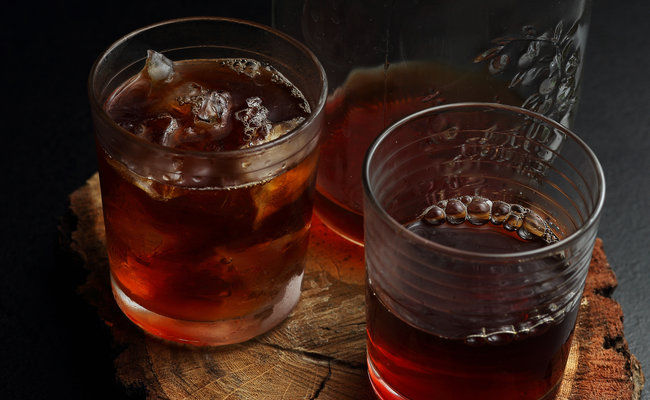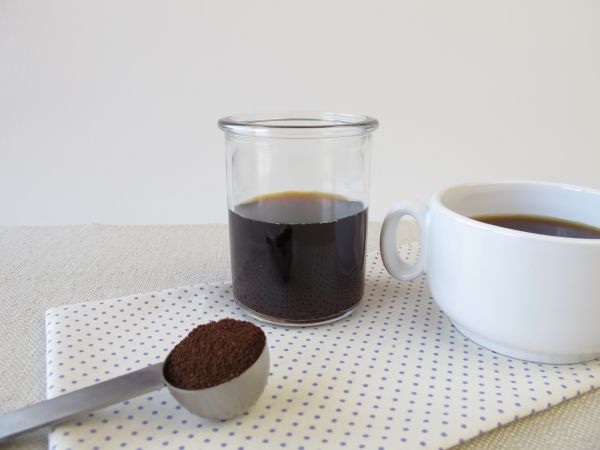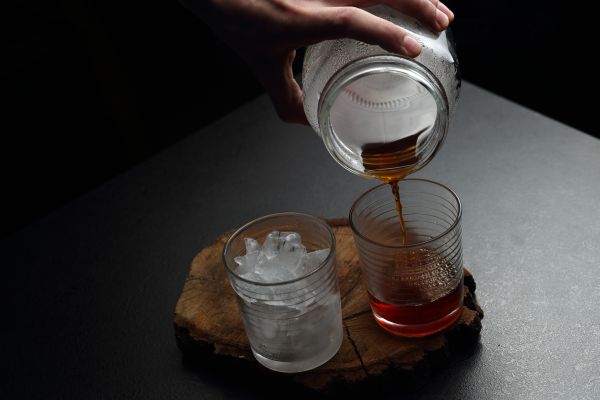
I’ve lived in New England for more than two decades, and one of the quirks of this part of the country is an obsession with coffee. Allen’s Coffee Brandy is the unofficial adult beverage of Maine. That Kuerig in your office was born in Maine and was bought out by a Vermont company. Rhode Island kids get coffee milk. And Boston buys an absurd amount of cold-brew coffee, even when it’s freezing outside.
But cold-brew coffee — all the rage with your Whole Foods friends — shouldn’t be a New England thing, or a hipster thing. It’s easy to make, easy to drink, and useful around the kitchen for more than just caffeinating.

Why Cold-Brew Coffee?
First off, what’s the difference between cold-brew coffee and iced coffee? Cold-brew is coffee soaked for three to 24 hours in cold water, usually tucked away in your fridge. Iced coffee is hot coffee that’s immediately cooled off. It’s cold-brew we’re focusing on today.
Ignore everything you’ve heard from artisan baristas and people with sleeve-tattoos about cold-brew. There’s only one measurable difference between cold-brew and your usual hot coffee: the temperature when you prepare it. That’s a pretty major difference though — one which has a huge effect on the flavor. Two cups made with the same bean will hardly taste like they’re related when one is prepared hot and the other is cold-brewed.
Coffee is full of lovely flavor compounds that react strongly to heat. That’s what gives hot fresh coffee its distinctive flavor and that smell. However, they’re volatile, which means you have to drink hot coffee soon after you brew it. Otherwise, they’ll evaporate or turn into other, less pleasant compounds, giving it a stale, battery-acid taste.
Cold-brew coffee keeps those flavor compounds intact. Due to the process, it’s less acidic, so sensitive stomachs can appreciate a good cuppa. It will also keep longer and it’s simple and cheap to make in large batches.
Cold-Brew Coffee, The Easy Way
The equipment:
- Two pitchers, of the same volume
- A mesh strainer that fits in the mouth of your pitchers
- Coffee filters
- A nut milk bag
- Salt
- Coffee
- Water
The steps are fairly simple, and once you see this stuff in one place, you’ll probably know what to do. But just for your edification, here’s how I do it:
- Open the bag around the mouth of the pitcher, and add about a half-cup of coffee. Next, sprinkle on a pinch of salt. Remember: Salt makes things taste more like themselves. A small amount in with the grounds really will improve your coffee.
- Pour your cold water over the coffee (I do 2-3 tablespoons of grounds/quart). It’ll filter through the bag, and when you are getting close to the top, pull the bag shut. Fill the pitcher the rest of the way, leaving the drawstring outside the bag. Put the lid on the pitcher and drape the drawstring on top (it’ll soak up coffee thanks to capillary action, and you don’t want it to drip in your fridge).
- Soak the brew for up to 24 hours.
- When you’re ready, pull the pitcher out, and filter. Once you’re done, stick the pitcher back in the fridge; a standard two-quart pitcher will give you about six to seven mugs of coffee.
- Lastly, be sure to pull out the bag and squeeze it over the pitcher before throwing out the grinds; you’ll get some intense flavor out of that.

Notes and Details
- A nut milk bag is just a fine mesh bag with a funny name. It’s not strictly necessary, but after a couple of times trying to clean the last bit of coffee grounds out of a pitcher, you’ll probably shell out the ten bucks for one.
- For coffee, I generally use medium roast because it’s widely available and a good balance between flavor and caffeine. Remember, the darker you get with coffee, the more flavor it has and the lower the caffeine content gets. Also remember that “medium” is defined by the roaster; it’s not an industry standard, so one company’s “medium” is another’s “blonde.”
- Flavored coffees are fine. But you’re going taste the flavoring much more intensely, so keep that in mind.
- Use a coarser grind and soak for longer, if you can. It makes a big difference in terms of clean-up.
- If your tap water is lousy, use filtered water. Distilled water is death on coffee; avoid it.

Okay, I Can Drink It. What Else Can I Do With It?
Cocktails: Sick of the Bloody Mary for brunch? Cold-brew coffee’s low acidity won’t get in the way of the flavor of lower-alcohol liqueurs. And, of course, all the hot coffee cocktails you know and love taste just as good with cold-brew.
Marinades And Brines: Since cold-brew doesn’t have the same acid content, that makes it a more effective, and flavorful, base for marinades. It’s better on heavier, meatier flavors like pot roast and pork shoulder, and I recommend having a cup before you use it so you know what you’re adding.
Hot Coffee: Add some boiling water to a cup, and you’ve got hot coffee without all the acid.
Coffee Ice Cubes: Fill some trays and freeze them; you can add coffee flavor to pretty much anything with them. And yes, you can use it to make coffee popsicles. It also works better for homemade coffee ice cream!
So there you have it. Now you know what the fuss is about. If nothing else, you’ll seem very smart when flirting with your local barista.
**Have an awesome coffee technique? Share it in the comments!**






